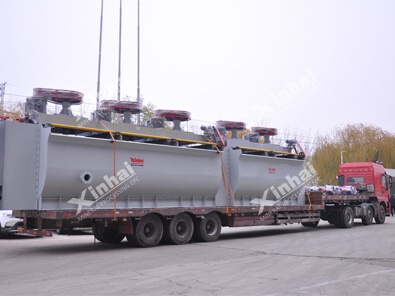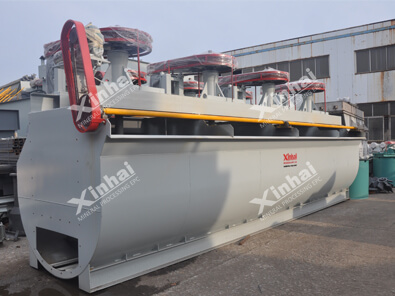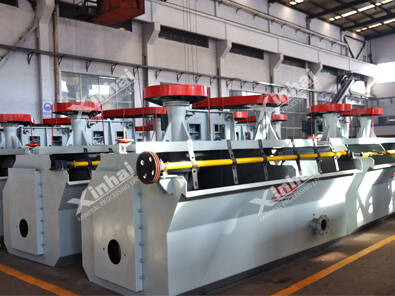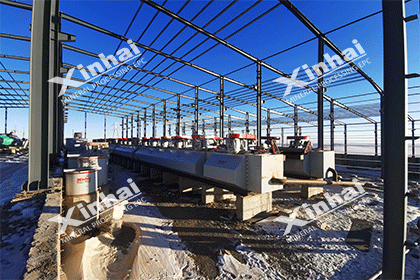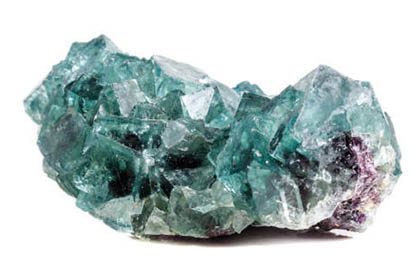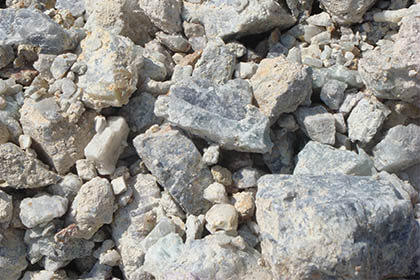5 Key Parameters Influencing Fluorite Flotation
 Shirley
Shirley
 May 25, 2023
May 25, 2023
 1529
1529
If you want to know more details about equipment, solutions, etc, please click the button below for free consultation, or leave your requirements!
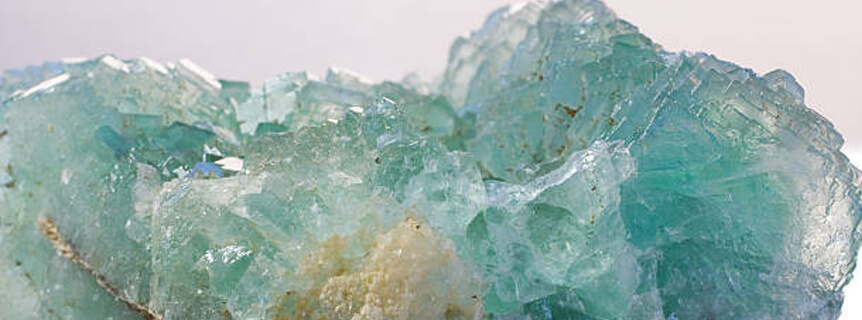
Fluorite is an easily floatable mineral, and flotation is a major method used in fluorite mineral processing. The key technical parameters that can affect fluorite flotation include the pH of the fluorite pulp, the temperature of the fluorite pulp, the particle size of the fluorite flotation, the hardness of the water in the fluorite pulp, and the flotation reagents used. In this article, we will explore how these parameters affect fluorite flotation.
01 Particle size in fluorite flotation
BackThe particle size in fluorite flotation affects the single-body dissociation degree and flotation indicators of fluorite and gangue minerals. Generally, a process flow of segmented grinding and stage separation is used to ensure the concentrate grade and recovery rate. As the quality requirements for fluorite concentrate are high, the requirements for particle size in fluorite flotation are also strict. Particle sizes that are too large or too small will affect fluorite flotation operations.
For fluorite with gangue minerals mainly composed of quartz, appropriate rough grinding is carried out in the roughing operation to reduce the loss of fluorite in the tailings caused by over-grinding. In the silica reduction operation in the concentration process, fine grinding is required to ensure that the gangue minerals and fluorite are fully dissociated and to improve the quality of the concentrate.
02 Flotation reagents in fluorite flotation
BackFluorite flotation reagents include collectors and inhibitors, which mainly affect the separationeffect of fluorite and gangue minerals. Generally, fatty acid collectors such as oleic acid and oxidized paraffin soap are used to collect fluorite. The advantage of using oleic acid and similar agents is that they are widely available and inexpensive. However, their selectivity and dissolution dispersion are not as good as other reagents, and they have poor freeze resistance. In addition, modified oleic acid products are prone to stratification after prolonged storage, and they are also prone to decomposition.
Inhibitors used in fluorite flotation mainly include inorganic inhibitors and organic inhibitors, which are mainly used to inhibit gangue minerals such as calcite, barite, and quartz. Inorganic inhibitors mainly include sodium silicate and sodium hexametaphosphate, while organic inhibitors mainly include rosin, lignin sulfonate, and so on. Sodium silicate is a commonly used effective inhibitor in fluorite flotation. To improve the selective inhibition performance of sodium silicate, it can be combined with high-priced metal ion salts or mixed with sulfuric acid in a certain proportion to form acidic sodium silicate. These measures can increase the adsorption selectivity of sodium silicate and significantly improve the flotation efficiency. Depending on the type of fluorite ore, combination reagents or new reagents can also be used for flotation separation.
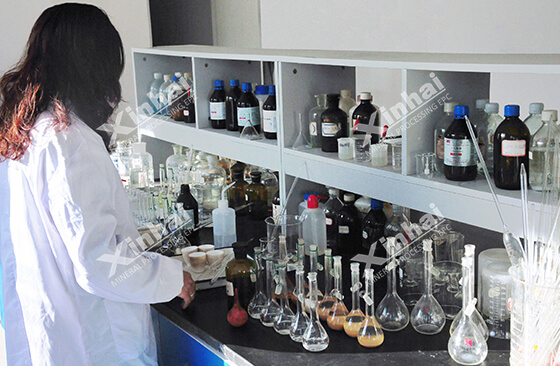
03 Temperature of fluorite pulp
BackThe temperature of the pulp is one of the key parameters that affects the solubility and dispersion of collectors and is related to the use of reagents. Generally, warm water flotation is used, and the water temperature of 20-35℃ is optimal to fully utilize the performance of the collector. Within this temperature range, the solubility of fatty acid reagents such as oleic acid increases with increasing temperature, the dispersion improves, and the effect of the collector is better. Therefore, in practical production applications, it is necessary to adjust the temperature of the pulp according to specific conditions to achieve the best flotation effect.
At the same time, the temperature of the pulp also affects the single-body dissociation degree and flotation indicators of fluorite and gangue minerals, so it is necessary to comprehensively consider the characteristics of fluorite and gangue minerals to determine the appropriate temperature range. In addition, other parameters in fluorite flotation also need to be considered, such as the particle size of fluorite flotation, the flotation reagents used, the pH of the fluorite pulp, and the water quality of the fluorite pulp. Considering these parameters comprehensively can optimize the fluorite flotation process and improve the grade and recovery rate of the concentrate.
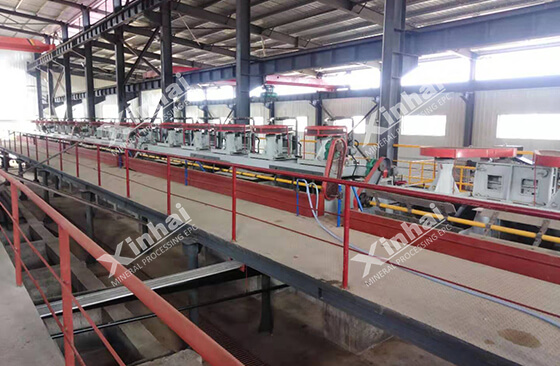
04 pH of fluorite pulp
BackThe pH value of the fluorite pulp is one of the key technical parameters that affect fluorite flotation, mainly affecting the floatability and selectivity of fluorite and gangueminerals. Generally, sodium carbonate or sulfuric acid is used as an adjustment agent to adjust the pH value between 8-11 to improve the flotation effect of fluorite. When adjusting the pH value of the fluorite pulp, it is important to note that a pH value that is too low or too high will have adverse effects on the flotation effect. For sodium carbonate adjustment agents, when the pH value is too low, the reduction reaction of sodium carbonate is prone to occur, which affects the flotation effect. When the pH value is too high, sodium ions will hydrolyze to form sodium hydroxide, making the flotation solution alkaline and reducing the floatability of minerals. Therefore, in practical production applications, adjusting the dosage of the adjustment agent and controlling the pH value of the pulp are necessary to achieve the desired flotation effect.
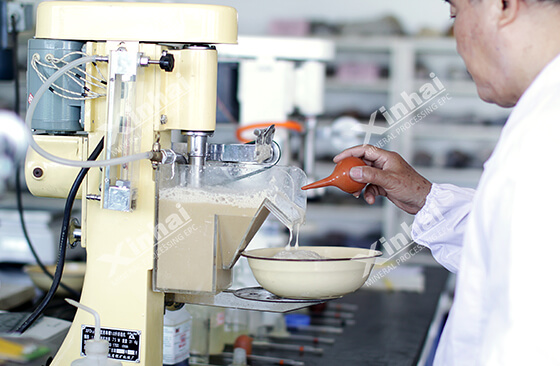
05 Water quality of fluorite pulp
Back
The water quality of the fluorite pulp may contain calcium ions and magnesium ions, which can interfere with the effect of collectors and inhibitors. To reduce the interference of magnesium ions and calcium ions in water on fluorite flotation, hard water should not be used during the flotation process. In the fluorite flotation process, the parameters such as water temperature, pH value, and particle size of fluorite flotation also need to be coordinated with each other. Considering these parameters comprehensively can optimize the flotation process and improve the grade and recovery rate of the concentrate.
06To Wrap Up
BackIn summary, this article introduces the key technical parameters that affect fluoriteflotation, including the particle size of fluorite flotation, the flotation reagents used, the temperature of the fluorite pulp, the pH of the fluorite pulp, and the water quality of the fluorite pulp. Different parameters have different effects on fluorite flotation, and the flotation reagents include collectors and inhibitors, which mainly affect the separation effect of fluorite and gangue minerals. The temperature and pH of the fluorite pulp also affect the fluorite flotation effect and need to be adjusted by adjusting agents to achieve the desired effect.
Overall, it is necessary to comprehensively consider these parameters to optimize the fluorite flotation process and improve the grade and recovery rate of the concentrate. You can also click to know the different types of fluorite separation methods.
 +86 183 3575 8886
+86 183 3575 8886 pinklaurabao@gmail.com
pinklaurabao@gmail.com




 Message
Message Chat Now
Chat Now


